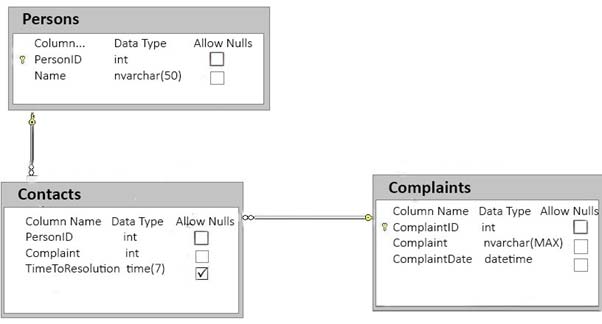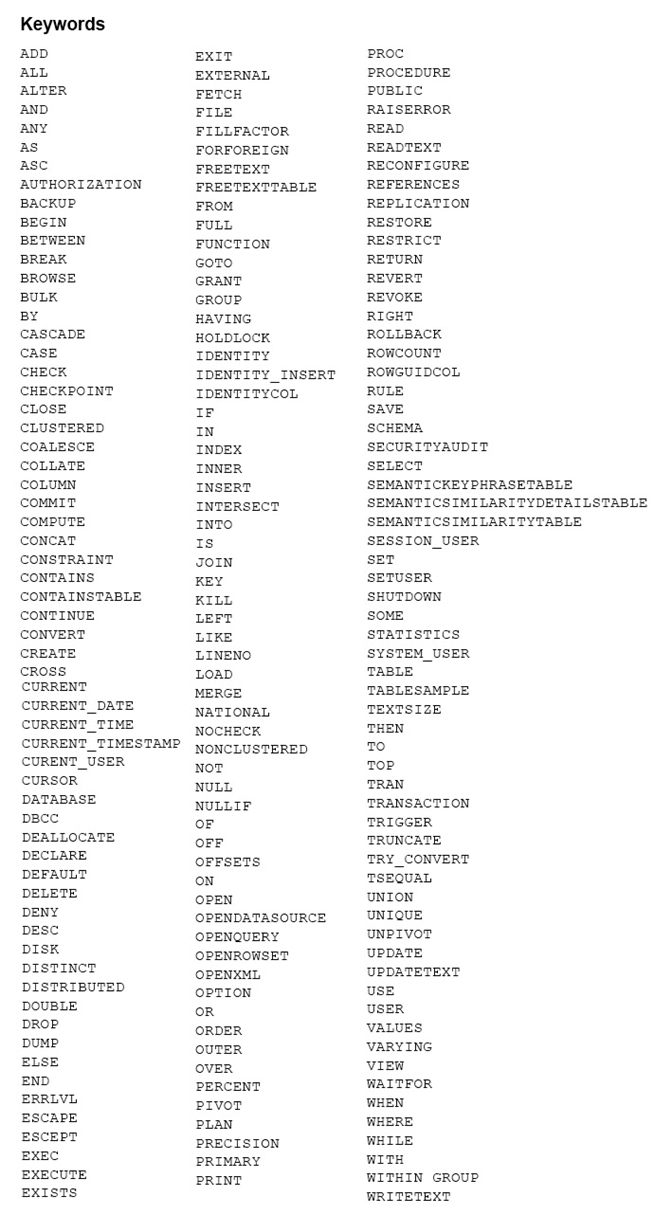

SIMULATION -
You have a database that contains the following tables.
You need to create a query that lists all complaints from the Complaints table, and the name of the person handling the complaints if a person is assigned. The
ComplaintID must be displayed first, followed by the person name.
Construct the query using the following guidelines:
✑ Use two-part column names.
✑ Use one-part table names.
✑ Do not use aliases for column names or table names.
✑ Do not use Transact-SQL functions.
✑ Do not use implicit joins.
✑ Do not surround object names with square brackets.
Part of the correct Transact-SQL has been provided in the answer area below. Enter the code in the answer area that resolves the problem and meets the stated goals or requirements. You can add code within the code that has been provided as well as below it.

Use the Check Syntax button to verify your work. Any syntax or spelling errors will be reported by line and character position.

Bartek
Highly Voted 5 years, 9 months agoitdoesntmatter
Highly Voted 5 years, 9 months agoVermonster
Most Recent 4 years, 6 months agoSkc20
4 years, 6 months agogeekeek1
4 years, 6 months agokimalto452
4 years, 6 months agolh2607
4 years, 6 months agoAndy7622
4 years, 7 months agoAndy7622
4 years, 7 months agoKosteK
4 years, 7 months agoAghie
4 years, 10 months agoAI_Cheong
4 years, 11 months agojulie2020
4 years, 11 months agoRobintang0924
5 years, 5 months agoAnette
5 years, 1 month agovermeilyn
5 years, 1 month agoMarcusJB
5 years, 1 month agomoehijawe
5 years, 5 months agoAnette
5 years, 1 month agoBraindripper
4 years, 9 months agotzaganczyk
4 years, 9 months agomlourinho
5 years, 7 months agoAnette
5 years, 1 month agofabzo
5 years, 8 months agoitdoesntmatter
5 years, 9 months agoDieter
5 years, 10 months ago